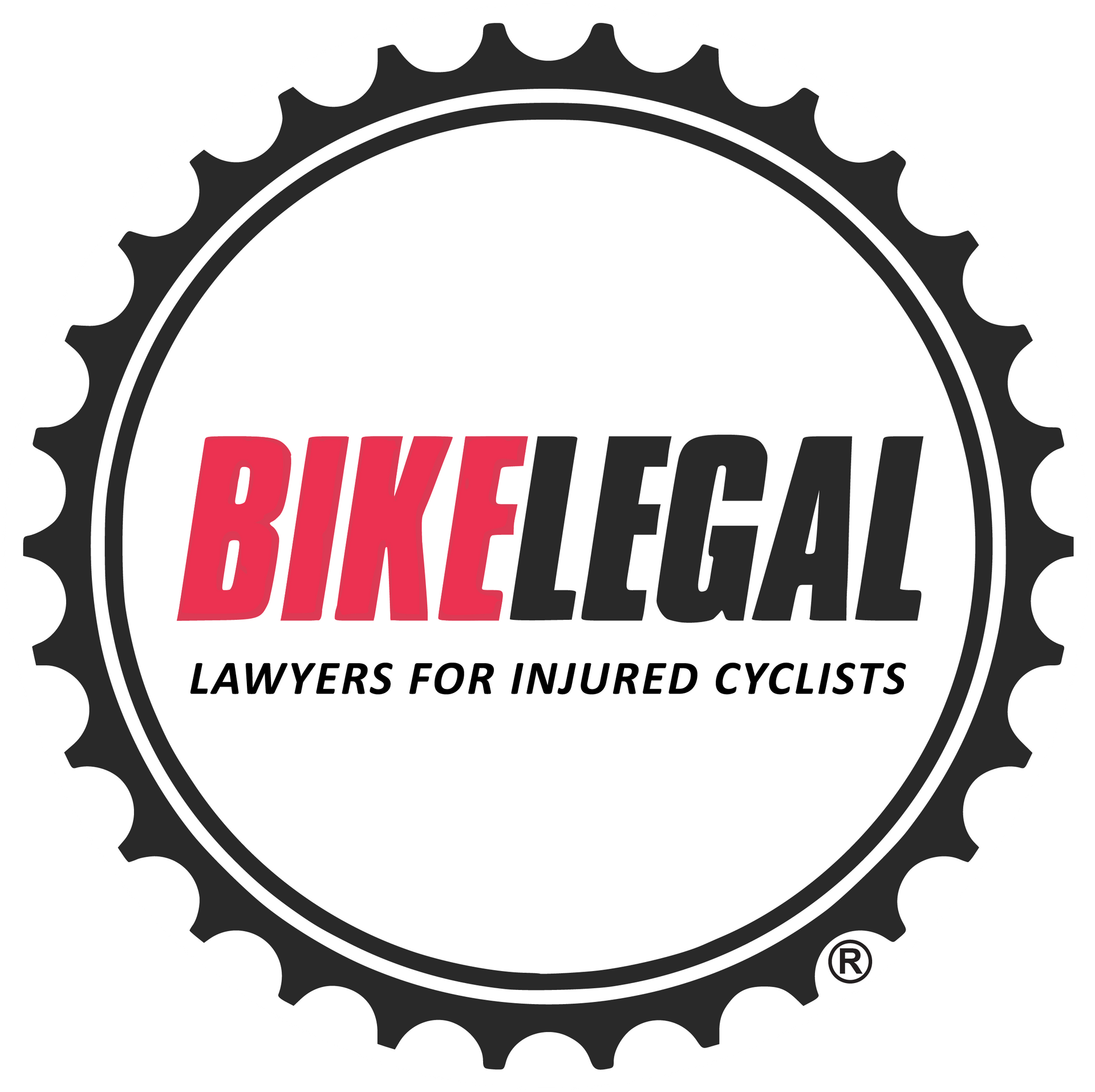Best Biking Cities in the U.S. 2025: PeopleForBikes Releases New Rankings
Follow us on
social media!
A perfect score, a new top large city, and 234 cities are reaching the critical "tipping point" for bike-friendliness. The 2025 PeopleForBikes City Ratings reveal an America that is slowly becoming more welcoming to cyclists.
Whether you're planning a move, scheduling a bike-friendly vacation, or advocating for better infrastructure in your hometown, this year's rankings offer valuable insights into where and how bicycle safety on our roads is improving across the United States. The best biking cities in the US 2025 reflect not just infrastructure, but a shift in national priorities.
A few highlights:
- First-ever perfect City Ratings score (Mackinac Island 100)
- Brooklyn overtakes Minneapolis as top large U.S. city
- City Ratings growth: nearly 3,000 cities rated, 241 new in 2025
- SPRINT framework recap: 234 U.S. cities now at or above the 50-point "tipping-point"
How the PeopleForBikes City Ratings Work
PeopleForBikes evaluates cities on a 0–100 scale using their proprietary SPRINT framework, which influences each city's bikeability score.
The PeopleForBikes SPRINT Framework Explained
- S - Safe Speeds: Lower speed limits and traffic calming measures that make streets safer for everyone.
- P - Protected Lanes: Dedicated, physically separated spaces for cyclists away from motor vehicle traffic.
- R - Reallocated Street Space: Converting car-centric infrastructure to accommodate multiple transportation modes.
- I - Intersection Treatments: Special designs like bike boxes, protected intersections, and bicycle signals that make crossings safer.
- N - Network Connections: How well bike routes connect to form a cohesive, usable network that gets people where they need to go.
- T - Trusted Data: Using reliable, up-to-date information to guide infrastructure decisions and measure progress.
What's New for 2025
This year's ratings include several methodological updates:
- New York City Split: For the first time, NYC's five boroughs are rated separately, providing more granular insights into America's largest city.
- OpenStreetMap Emphasis: Greater weight given to the quality and completeness of city data in OpenStreetMap, encouraging better documentation of cycling infrastructure.
- Nearly 3,000 Cities: This year, the program rated nearly 3,000 cities globally, including 209 new U.S. cities.
Why 50 Points Matter in a City’s Bike Friendliness
Reaching 50 points represents a critical "tipping point" in a city's bike-friendliness. At this threshold:
- Network effects begin to multiply as routes connect meaningfully
- More people feel comfortable riding for transportation, not just recreation
- Political momentum builds for continued improvements
In 2025, 234 U.S. cities scored 50 or higher, a significant increase from the 33 cities that achieved this milestone in 2019. This represents real progress in striving to make U.S. cities more bikeable.
While higher People for Bikes City Rankings correlate with increased safety, cyclists still face serious risks. Read our guide 2022 Bicycle Injury & Fatality Statistics (2024 Data) to understand why continued progress is essential.
2025 Bike Score Rankings: America's Best Biking Cities
For 2025, PeopleForBikes ranked nearly 3,000 cities worldwide, including 209 new U.S. cities. The comprehensive evaluation system offers a standardized approach to measuring and comparing cycling conditions across various urban environments.
Here are the 2025 most bike friendly cities in the US:
Top-Ranked Small Cities for Cycling in 2025 (<50,000 population)
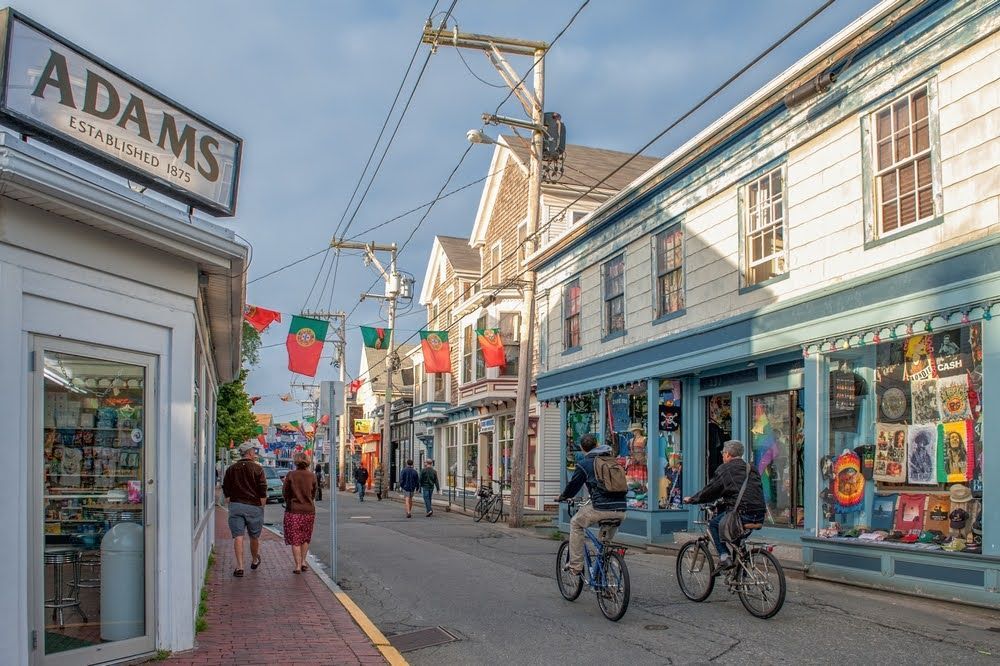
- Mackinac Island, MI — 100 (first perfect score)
This car-free island achieved cycling perfection through its complete ban on motor vehicles and comprehensive network of bike-friendly paths. Visitors and residents alike enjoy the freedom of biking safely throughout the entire island. - Provincetown, MA — 96
This compact coastal town at the tip of Cape Cod offers excellent connectivity, slow street speeds, and a culture that embraces cycling as a primary mode of transportation. - Sauk City, WI — 90
Wisconsin's oldest incorporated village has invested heavily in connecting its bike network to regional trails and implementing traffic-calming measures throughout the town. - Springdale, UT — 89
Gateway to Zion National Park, Springdale has transformed with the addition of protected bike lanes and path connections that serve both tourists and locals. - Washburn, WI
— 89
This Lake Superior community has prioritized cycling infrastructure that connects residential areas to schools, parks, and its scenic waterfront.
Best Medium-Sized Biking Cities in the U.S. (50,000–300,000 population)

- Davis, CA — 81
Long considered America's cycling capital, Davis maintains its lead through continued innovation, including the nation's first protected intersections and an extensive network of separated bike paths. - Berkeley, CA — 73
Berkeley has dramatically expanded its protected bike lane network and implemented numerous low-stress bicycle boulevards throughout residential neighborhoods. - Corvallis, OR — 71
Home to Oregon State University, Corvallis has created a comprehensive network of bike lanes and paths that connect the campus to downtown and residential areas. - Boulder, CO — 70
Boulder's 300+ miles of bikeways and innovative intersection treatments make it a standout in the mountain west region. - Cambridge, MA — 68
This historic city has transformed from a car-centric to a bike-friendly one through the aggressive implementation of protected bike lanes and traffic calming measures.
America’s Most Bike-Friendly Large Cities (>300,000 population)
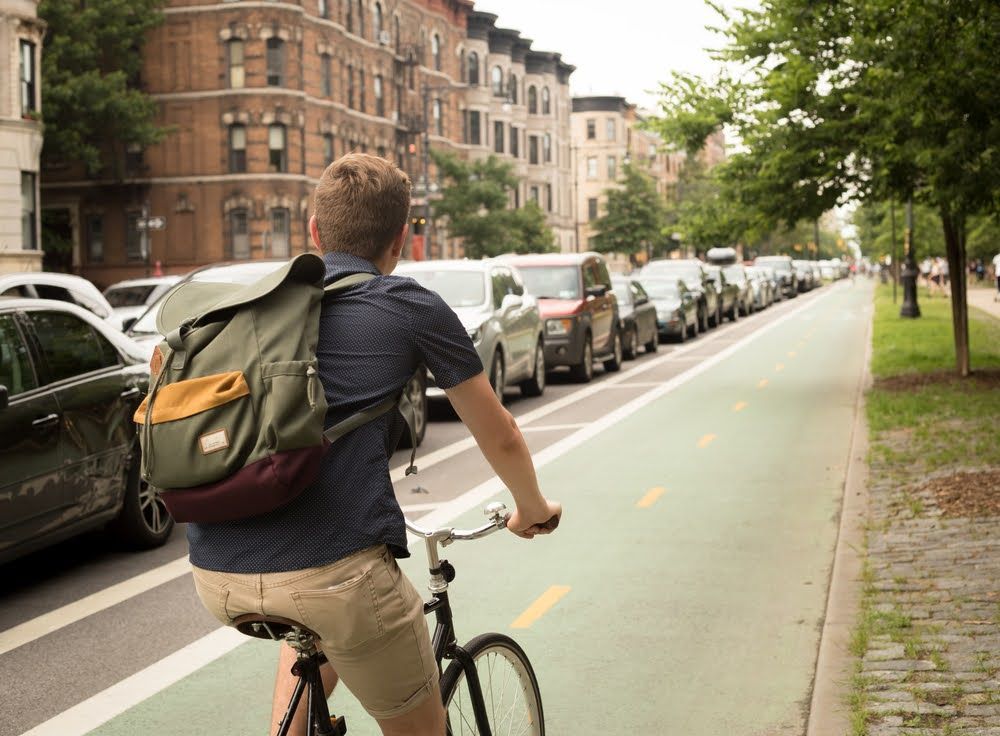
- Brooklyn, NY — 73 (new #1)
Brooklyn has overtaken Minneapolis as America's top large city for cycling, thanks to an expanding network of protected bike lanes and traffic calming measures. The borough is home to the largest share of New York City's 1,550-mile bike network, and an impressive 99% of residents live within a one-mile radius of a bike lane. - Minneapolis, MN — 72
Despite losing the top spot, Minneapolis continues to excel with its extensive trail system, protected downtown bike lanes, and winter maintenance program that keeps cycling viable year-round. - Seattle, WA — 66
Seattle has accelerated the implementation of bike infrastructure, focusing on connecting neighborhoods with protected facilities despite its challenging topography. - Queens, NY — 63
Another NYC borough makes the list with its expanding network of protected lanes and greenways connecting diverse neighborhoods. - San Francisco, CA — 63
Despite its hills, San Francisco has created an increasingly connected network of protected bike lanes and slow streets that make cycling a viable option for many trips.
Even in top-ranked cities like Brooklyn or Minneapolis, cyclists face everyday risks. Our guide, 'The Most Common Dangers of Cycling on the Road & How to Navigate Them,' breaks down real-world dangers riders should watch for.
Top International Cities
While the focus is on 2025 bike friendly cities in the US, it's worth noting the international leaders:
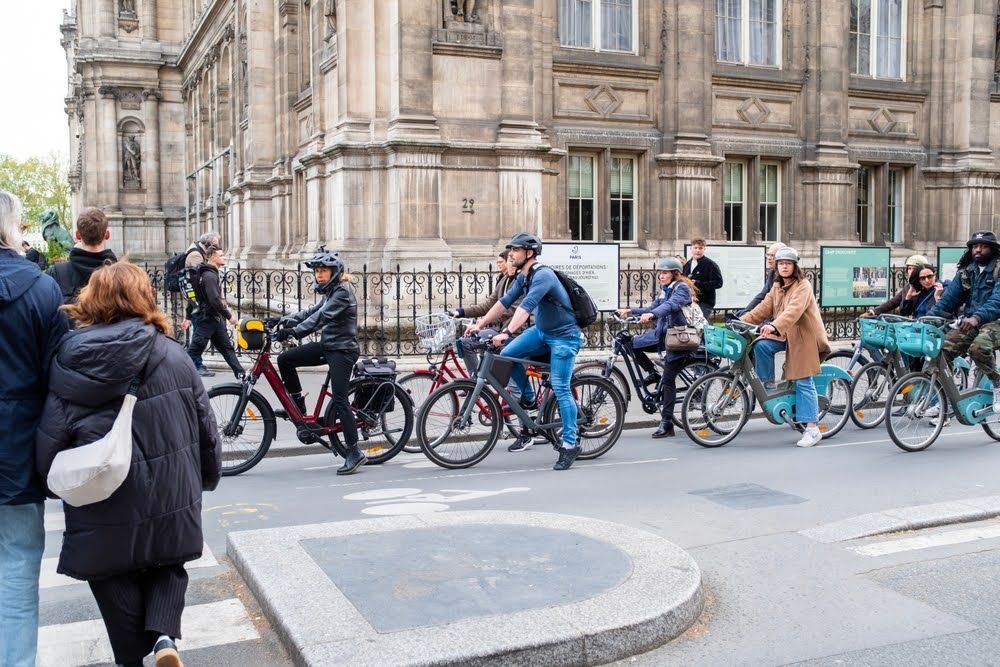
- Paris, France — 89
Under Mayor Anne Hidalgo, Paris has undergone a cycling revolution, adding hundreds of kilometers of protected bike lanes and reducing car access to the city center. - Delft, The Netherlands — 89
This Dutch cycling city exemplifies the gold standard in cycling infrastructure with its comprehensive network of protected lanes and bicycle-priority streets. - The Hague, The Netherlands — 89
Another Dutch cycling paradise, The Hague, demonstrates how decades of consistent investment in bike infrastructure create a truly bike-friendly city.
Spotlight: Brooklyn, NY
Brooklyn's rise to become one of the best cities for biking in the US deserves special attention. The borough has transformed its streets through:
- Extensive Network Coverage: Brooklyn has the largest share of NYC's 1,550-mile bike network, with 99% of residents living within one mile of a bike lane.
- Speed Management: A borough-wide 25 mph speed limit has made streets safer for all users.
- Protected Infrastructure: Expanding network of physically separated bike lanes, including major corridors like Bedford Avenue.
- Community Support: Strong advocacy from organizations like Transportation Alternatives and Good Co. Bike Club has built political support for cycling improvements.
National Trends: Progress Across the U.S. for Bicycle Safety in Our Cities
The 2025 PeopleforBikes report shows that cities across the U.S. are making tangible improvements:
- 234 U.S. cities scored 50 or higher (up from 183 in 2024)
- 80% of cities have improved their scores since 2020
- 22% of cities have increased their scores by 10 points or more
- Washington, D.C. showed the most significant improvement among large cities: 46 → 52
While many cities are improving, several states still report high bicycle crash statistics. Read Bicycle Accident Statistics: Top 10 States for Bicycle Accidents for a breakdown of which states are the most dangerous for cyclists.
Cities Improving Their Bike Infrastructure the Fastest
Several bike-friendly cities in the US made remarkable leaps in their scores thanks to focused infrastructure investments:
- Hailey, ID: 25 → 77 (citywide speed limit reduction and trail access improvements)
This small Idaho city connected its downtown to the regional Wood River Trail system. - Ashland, WI: 54 → 81 (school connections and trail improvements)
Ashland prioritized safe routes to schools and enhanced connections to its waterfront trail network along Lake Superior. - Anchorage, AK: 33 → 64 (protected downtown bike lanes)
Alaska's largest city has invested in a connected network of protected bike lanes in its downtown core, making winter cycling more feasible. - Cambridge, MA: 23 → 68 (protected lanes connecting key districts)
Cambridge has implemented an aggressive protected bike lane program, connecting Harvard Square, MIT, and other key destinations with safe cycling routes.
While infrastructure upgrades lower risk, collisions still happen. Our guide, 20 Types of Bicycle Accidents & Prevention Tips, breaks down the most common crash scenarios and how riders can avoid them.
Understanding Bikeway Infrastructure: From Exposure to Full Protection
Not all bike lanes are created equal. Here's a quick primer on the most common bikeway designs in the U.S., ordered from least to most protective:
| Level of Protection | Typical Name / Class | Key Features | Best Use Cases |
|---|---|---|---|
| 0 – Mixed Traffic | No bikeway (shared lane) | Riders share the travel lane with cars; no shoulder or markings | Low‑speed neighborhood streets, rural roads with very light traffic |
| 1 – Shared Lane Markings (Sharrow) | Class III Bike Route | Painted bike symbols remind drivers to expect cyclists, but offer no dedicated space | Traffic‐calmed streets under 25 mph or as short connectors between higher‑class facilities |
| 2 – Painted Bike Lane | Class II Bike Lane | 4–6 ft painted lane on the roadway edge; provides predictable space but no physical buffer | Urban arterials where curb relocation isn't yet possible; interim safety measure |
| 3 – Buffered Bike Lane | Enhanced Class II | Painted lane with 1–3 ft striped buffer separating bikes from vehicle lanes or parking | Streets with higher volumes/speeds where full protection is still pending funding |
| 4 – Separated / Protected Bikeway | Class IV Protected Bike Lane | Physical barrier (flex‑posts, curbs, planters, or parked cars) between cyclists and traffic | Multilane arterials, downtown corridors, areas with heavy truck/bus traffic |
| 5 – Raised Cycle Track / Side Path | Raised Protected Lane | Bike lane elevated above the roadway (sidewalk level) or behind curb‐side parking | Dense commercial districts, school frontages, transit corridors |
| 6 – Multi‑Use Path | Class I Shared‑Use Path | Fully separated, bidirectional path for bikes and pedestrians, typically ≥ 10 ft wide | Greenways, waterfronts, rail‑to‑trail conversions, long‑distance commuting spines |
Strong infrastructure works best when paired with responsible riding. Our guide, Bicycle Etiquette Guide: Essential Rules and Safety Tips for Cyclists, offers guidance on sharing public spaces safely and respectfully.
Bike Boxes at Intersections
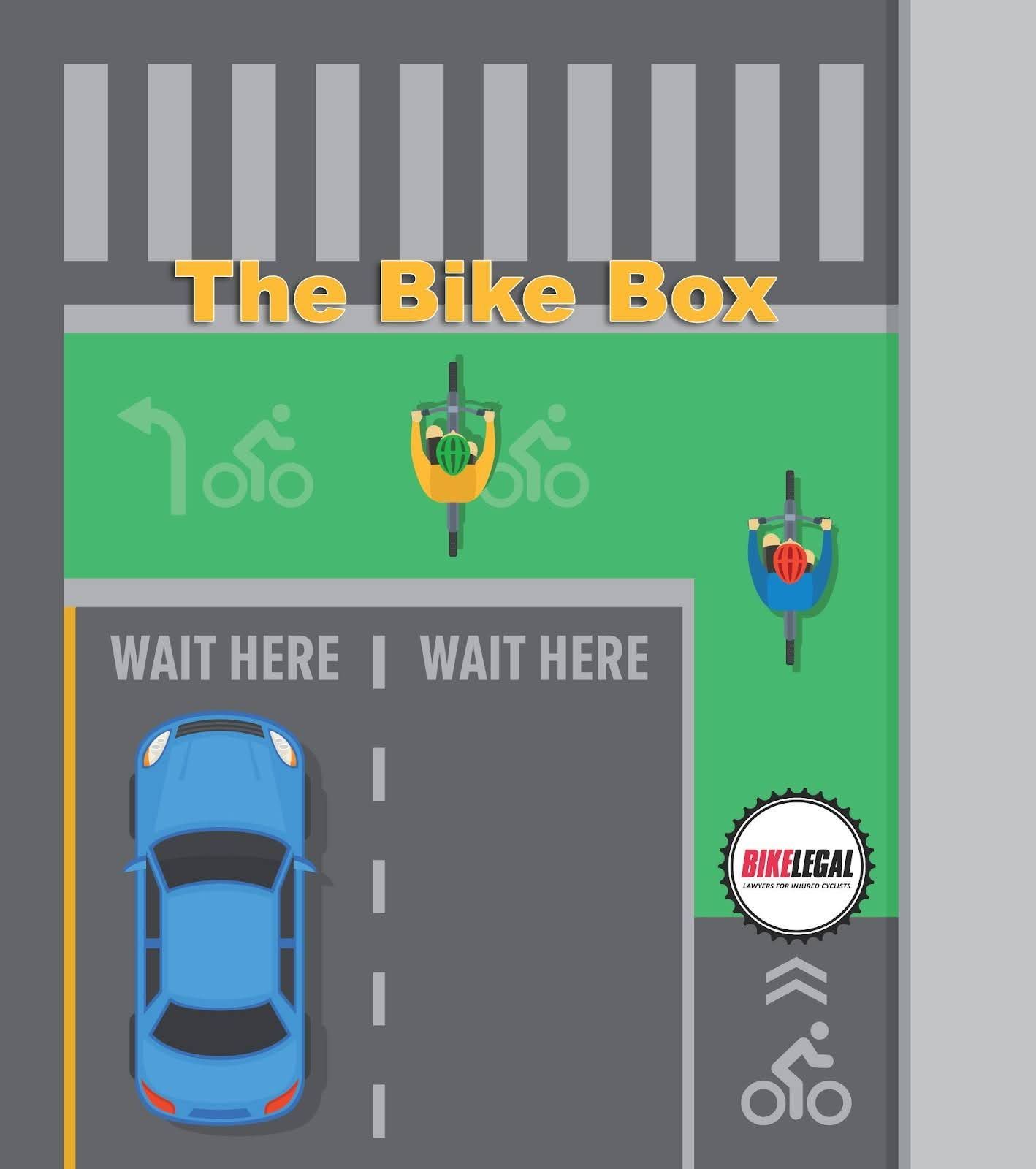
A bike box is a painted, advance stop zone that positions cyclists ahead of queued motor vehicles at red lights. Benefits include:
- Increases cyclist visibility to turning drivers
- Gives riders a head start when the signal turns green
- Reduces right‑hook collisions on streets with high turn volumes
Cities such as Portland, OR, and New York City have documented crash reductions of 10–20% at intersections retrofitted with bike boxes and leading bicycle intervals.
Takeaway: The higher the protection level, the wider the appeal. Mixing designs (e.g., linking a Class I trail to Class IV protected lanes via short Class II stretches) creates a seamless network that invites everyone—from kids to commuters—to ride.
Why Great Places to Ride Bikes Matter
The benefits of bike-friendly cities extend far beyond making cyclists happy. Research consistently shows that investments in cycling infrastructure deliver multiple returns across various aspects of community life:
Improved Safety
- Up to 90% fewer injuries per mile on streets with protected bike lanes
- Cities with protected lanes see 44% fewer fatalities and 50% fewer serious injuries
Health Benefits
- $1 in bike infrastructure = $24 in health savings through increased physical activity
- Active residents log 35–45 more minutes of exercise per week
- Regular cycling reduces the risk of cardiovascular disease by up to 46%
Economic Growth
- Bike-friendly streets = retail sales increases up to 49%
- Mountain biking tourists spend an average of $416 per visit
- Outdoor recreation supports 5 million U.S. jobs
Transportation Access
- 52% of daily trips in the U.S. are 3 miles or less—easily bikeable distances
- NYC's bike lanes cut travel times by 35% on some corridors
Opportunity and Equity
- Bike infrastructure helps low-income residents access jobs, schools, and parks
- Complete Streets projects create more jobs per dollar than traditional road projects
Cleaner Air
- Transportation accounts for 29% of U.S. emissions
- Shifting short car trips to bikes could save 54 million tons of CO2 annually
While high-quality infrastructure reduces crash risk, having the proper safety gear is additionally essential. Our guide to the 16 Best Bicycle Safety Accessories and Technology for Safer Rides covers equipment that enhances rider safety.
How to Use the City Ratings
The PeopleForBikes City Ratings aren't just interesting statistics; they're practical tools for various stakeholders:
For Riders
- Use the Bicycle Network Analysis map to plan safe routes in unfamiliar cities.
- Identify cities with strong bike infrastructure for vacation planning
- Find neighborhoods with good bike network connectivity when considering a move
For Advocates
- Leverage scores to push for infrastructure funding
- Identify specific weaknesses in your city's network
- Point to successful peer cities as models for improvement
For City Leaders
- Track progress and identify areas for improvement
- Benchmark against similar cities
- Prioritize projects that will have the most significant impact on connectivity
Even in high-scoring cities, crashes occur, and having legal support can make a significant difference in the recovery process. Our guide, Why Should You Hire a Bicycle Accident Attorney, explains how an experienced lawyer can protect your rights and maximize your compensation.
Bike Legal's Take
At Bike Legal, we see firsthand how safe infrastructure prevents injuries and saves lives. We represent cyclists in top-ranked cities like Brooklyn, Davis, and Portland, where strong networks make a difference.
We encourage every rider to check their auto insurance policy and ensure they have
uninsured/underinsured motorist coverage, which can be crucial if a driver with insufficient insurance hits you. Learn more in our guide,
A Bicyclist's Guide to Insurance.
Bike Infrastructure Is Improving — But the U.S. Still Prioritizes Cars
At Bike Legal, we applaud the growing momentum toward safer, more bikeable cities across the U.S. The 2025 PeopleForBikes City Ratings demonstrate that change is possible and is indeed happening. But despite these improvements, America remains overwhelmingly car- and truck-centric. Too many roads still lack protected lanes, safe intersections, or traffic-calming measures. The bicycle lane debate over how space should be shared continues to shape policy in many cities. Cyclists still face serious dangers from distracted, aggressive, or negligent drivers.
If you’ve been injured in a bicycle crash, you deserve experienced legal support. Our team focuses exclusively on representing cyclists. We understand your injuries, the value of your bike, and the unique legal challenges of bike accident claims. We’ll fight to hold drivers and insurance companies accountable so you can focus on healing.
Don’t try to navigate the aftermath of a crash alone. Contact Bike Legal today for a free, no-pressure consultation.
FAQs
What are the best cities for biking in 2025?
The 2025 top-ranked cities include Mackinac Island (100), Provincetown, MA (96), and Sauk City, WI (90) for small cities; Davis, CA (81), Berkeley, CA (73), and Corvallis, OR (71) for medium cities; and Brooklyn, NY (73), Minneapolis, MN (72), and Seattle, WA (66) for large cities. Internationally, Paris, Delft, and The Hague all scored 89.
What is the most bike-friendly city in the United States?
According to the 2025 PeopleForBikes City Ratings, Mackinac Island, Michigan, is the most bike-friendly city, boasting a perfect score of 100 in the PeopleForBikes City Ratings. Among large cities, Brooklyn, New York, ranks highest (73), followed by Minneapolis (72). For medium cities, Davis, California, leads with an 81.
What makes a city "bike-friendly"?
A truly bike-friendly city combines several key elements: protected bike lanes separated from traffic, lower vehicle speeds, interconnected networks that efficiently get people where they need to go, safe intersection designs, and a culture that respects cycling as a legitimate form of transportation. The PeopleForBikes’ SPRINT framework for biking measures these factors systematically.
Which United States city has the best bike paths?
Davis, California, Minneapolis, Minnesota, and Boulder, Colorado, have some of the nation's best bike path networks according to the 2025 ratings. Davis features over 100 miles of bike lanes and paths within a 10-square-mile area, while Minneapolis is known for its Midtown Greenway and extensive trail system, which remains accessible year-round.
How PeopleForBikes ranks cities?
The City Ratings use a 0-100 scale based on the SPRINT framework, which evaluates Safe speeds, Protected lanes, Reallocated street space, Intersection treatments, Network connections, and Trusted data. Cities are categorized by population size (small, medium, and large) to enable fair comparisons.
Is Brooklyn bike-friendly?
Yes, Brooklyn is now America's most bike-friendly large city with a biking score of 73. The borough has the largest share of NYC's 1,550-mile bike network, with 99% of residents living within one mile of a bike lane. Popular routes include the waterfront greenway, Prospect Park's car-free loop, and protected lanes on Bedford Avenue.
What should I do if I'm injured while cycling?
Seek immediate medical attention, report the incident to police, and document everything—take photos and collect witness information. Contact a bicycle accident attorney who specializes in cycling cases. For a full breakdown of post-crash actions, refer to our guide, What to Do After a Bicycle Accident.
